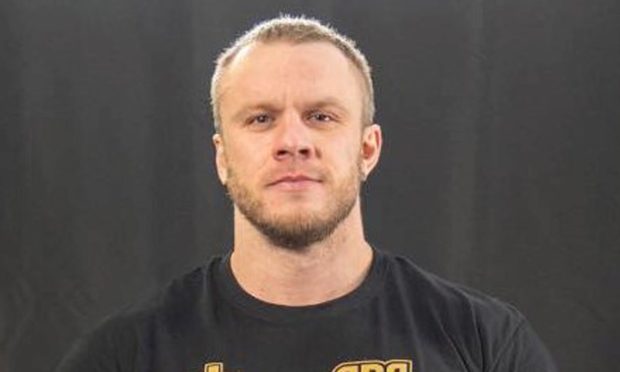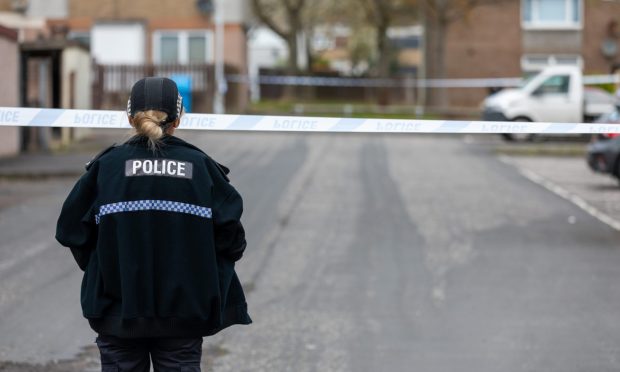A former champion athlete from Fife has told how he was denied his dream of starring at the greatest show on earth.
Sprinter and long jumper James Robb, 80, was a Scottish record holder but was stopped from representing his country or competing in the Olympic Games.
He had competed as a professional at the Highland Games and one firm rule that governed the Olympic Games at the time was that only amateur athletes were permitted to take part.
With the local Highland Games season well under way, Mr Robb shared his story in the hope that more athletes will come forward with their memories of how their athletic careers were restricted due to the strict amateur rules at the time.
He represented the RAF athletics team where he was renowned for his prowess and he broke RAF records in the 100 yards, 220 yards and the hop, step and jump.
“I was a sprinter and long jumper who was local Highland games champion in Cupar for at least six times in the 50 and 60s before I was conscripted,” he said.
“I was the RAF Decathlon champion in 1960, however as I had competed as a professional at the Highland games I could not represent Scotland or go to the Olympics in 1964.
“I was recorded with the longest Scottish long jump in 1963 and whilst in the RAF in Cyprus in 1965 I was recorded at 9.4 seconds for the then 100 yards.”
Mr Robb said the “big mistake” happened when he was persuaded as a teenager to run at the Cupar Highland Games in the 1950s after sweeping the board at Boys Brigade camp.
He said: “My friends encouraged me to run as we had just returned home.
“I found out later it was a big mistake as I was then classed as professional with no chance in those days of reinstatement.
“When I was in the RAF I was competing in station sports and inter-command competitions and was doing OK but not winning much until I started to adopt a training regime,” he said.
“I was an airframe fitter at the time and not allowed to change trades but in 1960 I was on the way to run for the RAF in Spain and the day before we competed in the first day of the decathlon championship as training.
“They didn’t take me to Spain as I was in about fourth position after day one with a chance of a bronze medal on what was my first trip ever abroad.
“The number one and two British decathletes were in the field and I won it and I still have the medal.
“It took almost a year for the medal with my name on it to be presented.
“I think the original one had been pre-engraved because they didn’t think I would win.
“In Cyprus I competed against athletes who had represented various countries in the Commonwealth and European championships. I never lost.
“Many other great Scottish athletes were restricted by being classed as professional with no chance of reinstatement due to competing at the Highland Games.
“So much has changed – my biggest wish was for a Scottish vest as I was competing against Scottish international athletes who couldn’t understand that I could best them, but never went to the Scottish Championships.”
The 1964 Olympics in Tokyo and the Tokugawa Curse
The 1964 Tokyo Games were the first to be held in Asia.
Tokyo had been awarded the 1940 Olympics, but this honour was subsequently passed to Helsinki because of Japan’s invasion of China, before ultimately being cancelled because of the second world war.
The games were scheduled for mid-October to avoid the city’s midsummer heat and humidity and the September typhoon season.
A total of 93 nations were represented at the 1964 Games.
Athletes from East Germany and West Germany competed together as the United Team of Germany.
Indonesia was banned for this Olympic Games, due to its refusal to allow Israeli and Taiwanese athletes visas at the 1962 Asian Games.
The carrier of the flame, Yoshinori Sakai, was chosen because he was born on August 6 1945, the day the atomic bomb exploded in Hiroshima, in homage to the victims and as a call for world peace.
A cinder running track was used for the last time in the athletics events, whilst a fibreglass pole was used for the first time in the pole vaulting competition.
The Tokyo Games was also the last occasion that hand timing by stopwatch was used for official timing.
Abebe Bikila of Ethiopia became the first athlete to win the marathon twice, whilst Soviet gymnast Larysa Latynina brought her career medal total to an incredible 18.
It also proved fourth time lucky for Greco-Roman wrestler Imre Polyak, who finally won gold after finishing second in the same division at the previous three Olympic Games.
The first official Fair Play Trophy for setting an outstanding example of sportsmanship was awarded to Swedish yachtsmen Lars Gunnar Käll and Stig Lennart Käll.
The Swedes gave up their race to come to the aid of two other competitors whose boat had sunk.
Joe Frazier, future heavyweight champion of the world, won a gold medal for the USA in heavyweight boxing.










